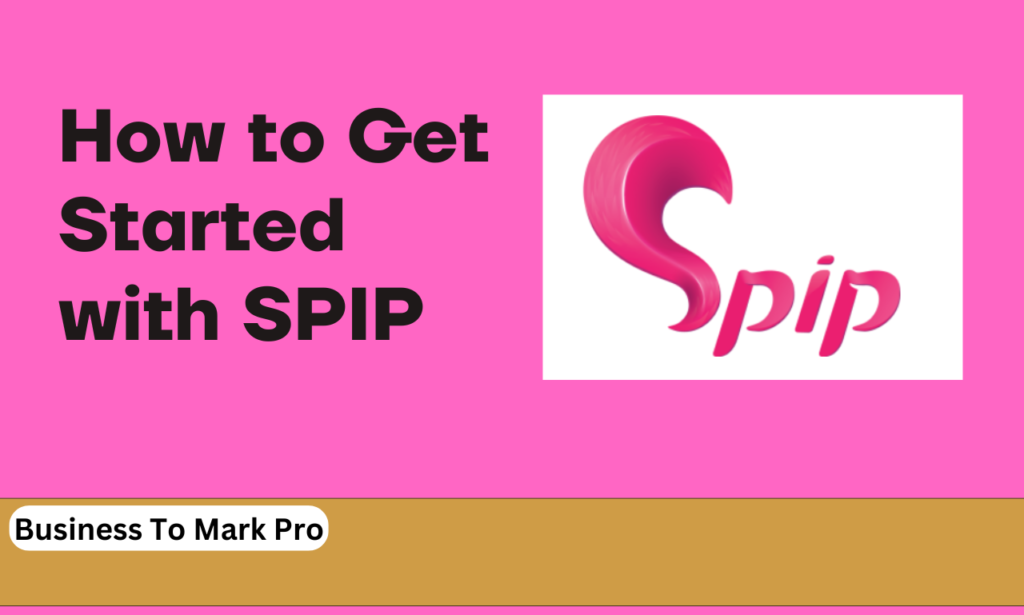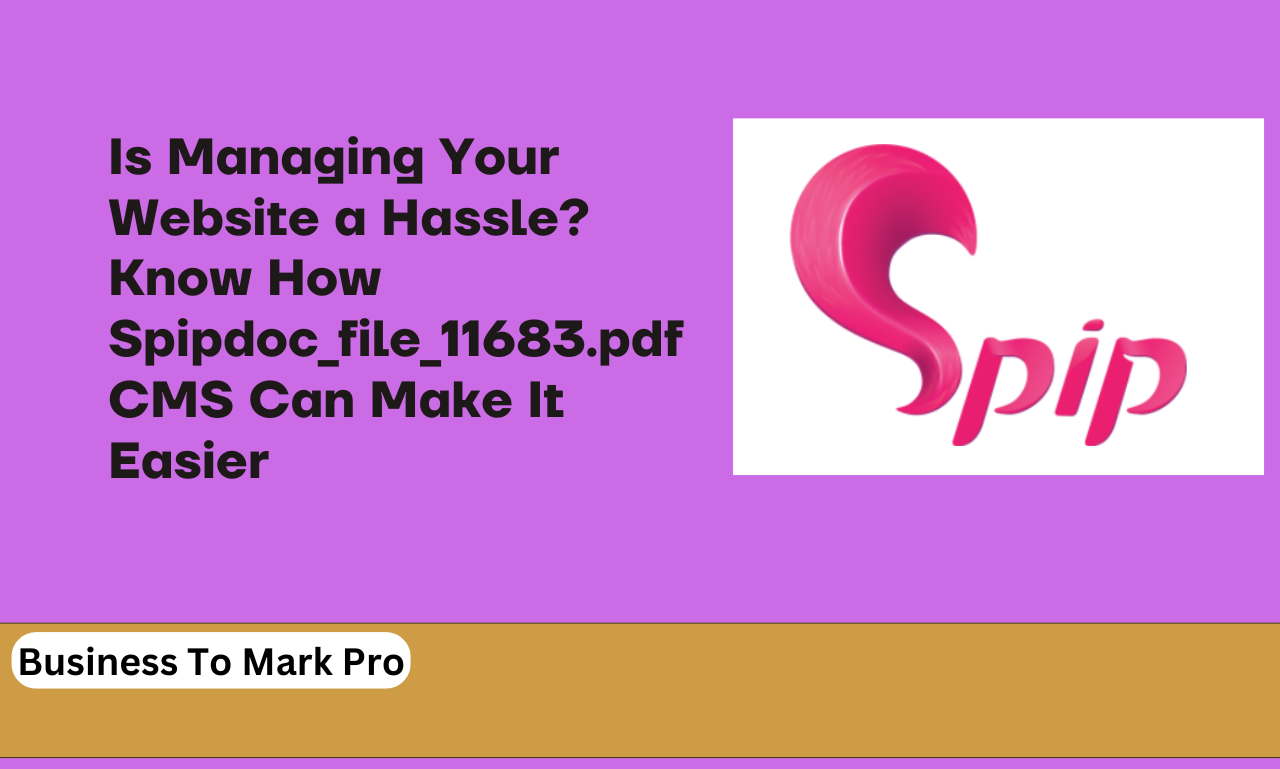If you’ve ever found yourself overwhelmed by the complexities of managing website content, you’re not alone. For many, keeping a website updated and organized can feel like a never-ending chore. But what if there was a tool that could simplify this process, allowing you to focus on what truly matters—creating amazing content? Enter SPIP, a robust and user-friendly content management system (CMS) designed to streamline content management, even if you’re not a tech whiz.
In this article, we’ll dive deep into what SPIP is, why it’s a standout CMS, and how it can help both beginners and experienced developers maintain websites with ease. By the end of this guide, you’ll understand not only why SPIP is a great choice but also how to make the most of its features to take your website to the next level.
What is SPIP?

SPIP stands for Système de Publication pour l’Internet Partagé, which translates to “Publishing System for Shared Internet.” It’s an open-source CMS primarily designed for managing online content, especially for those who may not have extensive technical knowledge.
But here’s the kicker—unlike many of the bulky CMS platforms out there that come with a steep learning curve (looking at you, WordPress), SPIP is intuitive and simple to use. At its core, SPIP provides an easy way to create, publish, and organize web content, making it a favorite for developers and non-techies alike.
It’s perfect for anyone who wants the freedom of managing their own site without getting bogged down in overly complicated setups. Whether you’re running a blog, a media-rich website, or an online journal, SPIP offers the tools you need.
Why Choose SPIP Over Other CMS Platforms?
The digital world is full of CMS options—WordPress, Joomla, Drupal—so why choose SPIP? Let’s explore the features that set it apart:
1. User-Friendly Interface
One of SPIP’s greatest strengths is its ease of use. The interface is simple and straightforward, making it ideal for beginners who are intimidated by other CMS platforms. Unlike systems that require you to manage databases and install dozens of plugins, SPIP offers a clutter-free experience right out of the box.
2. Customizable and Flexible
While it’s easy to use, SPIP doesn’t sacrifice customization. Developers will love how flexible it is in terms of customization. The system allows for complex modifications, thanks to its well-structured code and template system. Whether you’re looking to tweak a design or enhance functionality, SPIP gives you the room to grow.
3. Multilingual Support
If your website caters to a global audience, SPIP’s built-in multilingual support will be a game changer. You can seamlessly manage different language versions of your site, all within the same CMS. It’s a great option for news websites, academic journals, and international organizations.
4. Strong Security Features
Another key advantage of SPIP is its strong security framework. Since SPIP isn’t as widely known as CMS giants like WordPress, it’s less targeted by hackers, making it a safer option. Additionally, SPIP receives regular updates from its dedicated developer community, ensuring that vulnerabilities are quickly patched.
5. Collaborative Editing
Ever tried to manage content with a team and found it chaotic? With SPIP, collaboration is a breeze. The system is designed to support multiple users, giving each team member specific roles and permissions. This is especially useful for larger organizations where different people are responsible for various parts of the website.
6. Accessible to All
SPIP is designed with accessibility in mind, adhering to international web standards. This means that websites built with SPIP are optimized for users with disabilities, ensuring that your content reaches the widest possible audience.
How to Get Started with SPIP

Ready to take the plunge? Setting up SPIP is a simple process, but there are a few key steps you’ll need to follow to get everything running smoothly. Here’s a quick guide to help you hit the ground running:
1. Installation
You’ll first need to download SPIP from their official website. Once downloaded, upload the files to your web server using FTP. The installation process is simple and doesn’t require a technical background. SPIP automatically creates the necessary database tables and asks for basic configuration information.
2. Choose a Hosting Plan
To run SPIP, you’ll need a server that supports PHP and MySQL. Most hosting providers, including shared hosting services, meet these requirements. SPIP is lightweight, so you don’t need a powerful server to run it, making it a cost-effective choice.
3. Select a Template
Out of the box, SPIP comes with a default template, but one of the key features of SPIP is its flexibility. You can either choose from a wide array of pre-built templates or create your own from scratch. Since SPIP uses a skeleton-based templating system, even those with minimal HTML and CSS knowledge can tweak the design.
4. Adding Content
Once your site is set up, you can start adding content via SPIP’s user-friendly admin panel. Organizing articles, categories, and sections is straightforward. Whether it’s blog posts, news articles, or multimedia content, SPIP makes it easy to manage everything in one place.
Also Read: What Is an eText Format: BryteWave Format?
Advanced Features: Going Beyond the Basics
If you’re ready to take your SPIP game to the next level, here are some advanced features worth exploring:
1. Custom Plugins
While SPIP comes with a lot of built-in functionality, you can extend it further by using plugins. The SPIP community has developed a wide range of plugins for SEO, e-commerce, and more. Installing plugins is as easy as a few clicks, and you can find them in the SPIP plugin repository.
2. Integration with Other Tools
SPIP integrates seamlessly with other tools such as Google Analytics, social media platforms, and newsletter services. Whether you want to track your website’s performance or share your content across different channels, SPIP has you covered.
3. SEO-Friendly
Speaking of performance, SPIP is designed with SEO best practices in mind. URLs are clean and customizable, and the system automatically handles things like meta descriptions and alt text for images. With SPIP, you don’t have to worry about search engine optimization—it’s built right into the platform.
Why SPIP is Perfect for Non-Profits, Academics, and Small Businesses
While SPIP is a versatile CMS that can handle almost any website, it’s especially well-suited for non-profits, academic institutions, and small businesses. Its collaborative features, multilingual support, and cost-efficiency make it a standout choice for organizations that need a reliable CMS without the high price tag of proprietary platforms.
Non-profits love SPIP for its scalability. Whether you’re a small local organization or a large international NGO, SPIP grows with you, allowing you to add new sections, contributors, and languages as your needs evolve.
For academic institutions, SPIP offers journal management features that allow for easy publication of scholarly articles. The system’s accessibility and SEO features make it easier for research to reach a global audience.
Small businesses, on the other hand, benefit from SPIP’s customizability. Want to create a branded website with minimal effort? SPIP’s flexibility in design makes it a fantastic choice for businesses that need to stand out.
Final Thoughts: Is SPIP Right for You?
SPIP may not be the most well-known CMS, but it’s certainly one of the most powerful and user-friendly. Whether you’re a complete beginner looking for an easy way to manage your website or a seasoned developer in need of a flexible system, SPIP offers something for everyone.
With its intuitive interface, advanced features, and strong community support, SPIP is an excellent choice for anyone looking to simplify content management without compromising on functionality. If you’re ready to take your website to the next level, SPIP might just be the tool you’ve been searching for.
By focusing on ease of use, customization, and security, SPIP stands out in the crowded world of CMS platforms. So why not give it a try?
FAQs About Spipdoc_file_11683.pdf
1. What makes SPIP different from other CMS platforms like WordPress or Joomla?
SPIP stands out from other CMS platforms because of its simplicity and user-friendly interface. While platforms like WordPress and Joomla can be overwhelming with numerous plugins and settings, SPIP offers a streamlined experience ideal for both beginners and advanced users. Additionally, SPIP features multilingual support, collaborative editing, and built-in security, making it an excellent choice for non-profits, academics, and small businesses. Its less frequent use also makes it a less attractive target for hackers, adding to its security appeal.
2. Is SPIP a good option for non-developers?
Absolutely! SPIP was designed with non-developers in mind. The interface is intuitive, and you don’t need any coding knowledge to get started. You can easily create, manage, and publish content without the need for complex configurations. For users who want a website without getting bogged down in technical details, SPIP provides a clean, user-friendly experience, while still allowing developers the flexibility to customize and expand functionality as needed.
3. Can I customize the look and feel of my website using SPIP?
Yes, SPIP is highly customizable. Although it comes with default templates, you can choose from a variety of pre-built templates or create your own from scratch using SPIP’s skeleton-based templating system. Even with minimal knowledge of HTML and CSS, you can tweak your site’s design. For more advanced users, SPIP’s flexible code structure allows for deeper customization, ensuring that your website reflects your unique brand or organizational identity.
